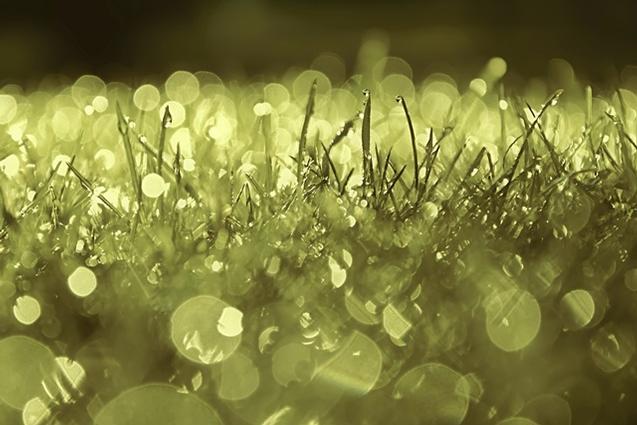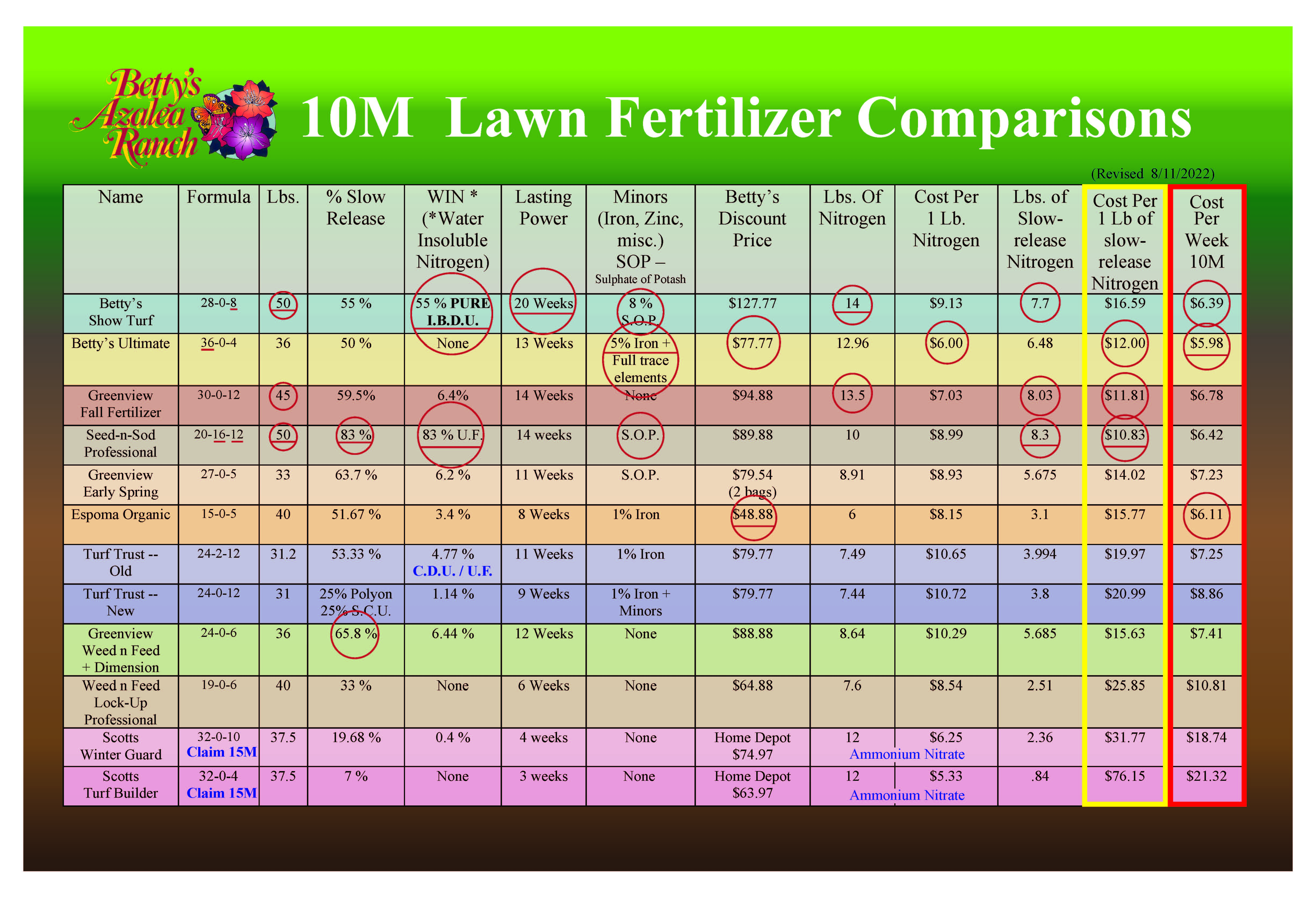Choosing the Best Fertilizer for your Lawn: How to Decode Labels

When we’re shopping for lawn and garden supplies, it’s tempting to settle for the lowest-cost product or something from a recognizable brand name. But there are actually several active ingredients that you should be looking for when feeding your lawn, and like food for people, density of key nutrients is what will make your lawn happiest and healthiest. When reframed that way, the chart we show here makes more sense.

Click Here to Read Full Sized Comparison Chart
How Should I Compare Lawn Fertilizers?
We use the lawn fertilizer comparison chart above to show consumers what the bang they’re really getting for their buck and compare 12 popular lawn fertilizers. In addition to basics like price, net weight and formula (a set of 3 numbers that display the percentage of nitrogen, phosphorous, and potassium present), here are some other important call-outs:
-
Percent Slow Release: This shows the percent of the nutrients in the fertilizer that are slow release, or released gradually over time.
-
Water Insoluble Nitrogen: Whether the nitrogen in a fertilizer is water soluble (WSN) or water insoluble (WIN) determines how readily available the nitrogen is for your lawn, and thus whether the lawn is fed immediately upon application or gradually over time (aka slow release).
-
Percent Minors: Minors are additional nutrients not shown in the 3 numbers on the bag.
Knowing these basics, you can then understand that slow release nitrogen is an important factor in the quality of a fertilizer, and so we then look at cost per pound of fertilizer and cost per week of feeding your lawn. The chart circles the winners here - note that they’re different from the products with the lowest cost per bag.
Why is Slow Release Important in Fertilizers?
The percentage of slow release nutrients in a fertilizer shows what your lawn will receive over time instead of immediately upon application. Quick release fertilizers promote excessive growth, leading to more mowings and maintenance. Lawn growth that is too rapid can also cause burning and for your grass to become thin and weak.
Alternatively, slow release fertilizers offer steady, consistent growth over time with less need for frequent mowings and reapplications. Consistent nutrition from slow release fertilizers also protects your lawn against disease.
Why is Nitrogen Important to Lawns?
Of the three important macronutrients lawns need, nitrogen is most essential. Nitrogen encourages the production of chlorophyl in lawns, which produces a vibrant green color. It also balances leaf and root growth.
After reading this chart, you may still notice there are several good choices of top quality fertilizer for your lawn. Additional factors may make one choice better than others, ranging from size to climate to fescue. Visit Betty’s truf department or call us to find out more about these products.
-
12507 Route 29, VA 22030